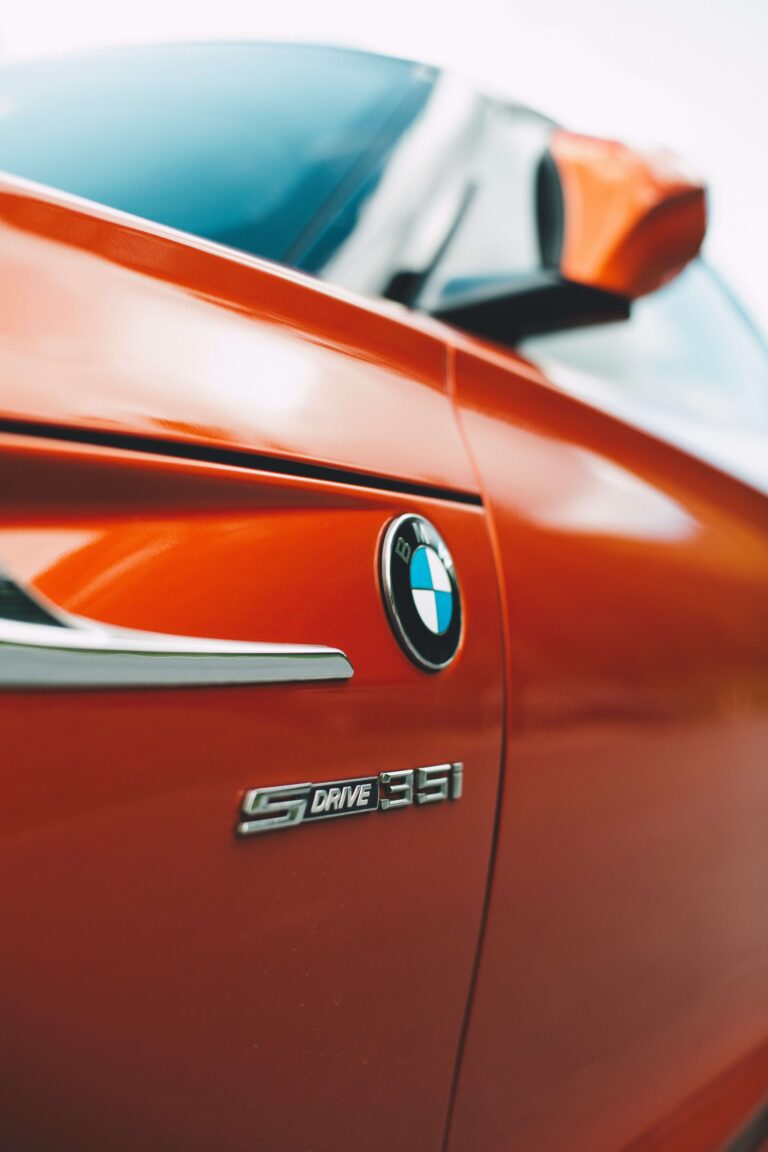What Is The Best Type Of Wax For Your Car?
Waxing is one of the most critical elements of car maintenance that many people neglect. Wax isn’t just a gimmick to make your car look gleaming and new it also protects it from environmental damage. Waxing your car regularly keeps it looking good and protects your investment. Waxing is the first and last line of protection against paint damage, which can reduce the value of your vehicle.
Wax is a protective coating that is added to the top layer of paint, which is almost always a transparent coat on today’s cars. The finish on a modern vehicle is made up of three layers: a base primer, a colour coat, and a clear coat. The smoothness of the clear coat defines the consistency of a vehicle’s shine; the smoother the top layer of paint is, the more it resembles a mirror.
Some forms of car wax can also mask minor surface defects in your vehicle. Car wax can help with cracks, paint fading, and exterior corrosion when used as part of your daily maintenance routine.

Benefits of Waxing
- Defense from scratching. Small pieces of debris, dirt, and sand that cause paint scratches can be held off your paint with a properly applied coat of car wax. Wax serves as a shield, deflecting these scratch-causing villains and maintaining the luster of your paint.
- Makes it easier to wash your car. Daily waxing adds a layer of security to your paint, stopping tree sap, broken bugs, bird feces, and other road grime from adhering to it. Standing water is repelled by wax, leaving difficult-to-clean spots behind.
- Protects from damage. Even the tiniest pebble will trigger a flaw, a chip, or a ding in your paintwork. Wax won’t stop bullets from entering your vehicle, but its sealing properties will help keep your paint in good shape and protect it from damage on the road.
- Maintains the gleam of a new car. Waxing your car regularly will help protect the paint and keep it looking fresh. Unprotected car paint can dry out and lose its lustrous properties. Neglect is typically the source of dull or oxidized paint.
- Scratches are reduced in appearance. Regular waxing will not mask or heal deep scratches, but it will make superficial scratches look less visible.
- Increases the resale value of the land. Consider car waxing to be normal maintenance, equivalent to changing your oil or rotating your tires. When it comes time to trade-in or resell your well-maintained vehicle, spending time in car maintenance now will pay off.
Types of Car Wax
There are three types of car waxes available on the market,spray-on, oils, and pastes. The essential factors to consider when selecting a car wax are gloss enhancement, longevity, ease of application, ease of removal, how well it cleans the paint surface, UV safety, compatibility with plastics, and price.
Paste Wax
This is the most common form of car wax. Because of the natural oils, it gives your car a perfect shine and water beading. It does, however, require more regular application than liquid wax. They’re typically more expensive than other forms of wax as well.
Since certain paste waxes have a very hard texture, applying them can be difficult and necessitate the use of special equipment. They do, however, offer superior protection to liquid and spray waxes, and they can even make your car smell good. The majority of “natural” products have a paste consistency.
Liquid Wax
Owing to the addition of synthetic polymers, liquid wax has a finer feel than paste wax and has the longest-lasting effects. It is, however, very difficult to apply because it dries rapidly. Despite this, it is the most frequently used wax by regular drivers.
For older, higher-mileage cars that need more intensive cleaning and sealing, liquid car waxes are preferable. Those are typically good for shine and longevity. (Some liquid car waxes often clean the finish) Carnauba wax, which is known for its high gloss and toughness, is used in a variety of liquids.
However, you should be vigilant when shopping for one since others are abrasive and can scratch your vehicle’s surface.
Spray Wax
Spray waxes are characterised by their compact packaging, which allows for precise application. They’re ideal for treating trouble areas or giving your car a quick wax when you’re on the go. Aside from that, they’re perfect for improving the shine and offering extra safety to new cars with a high-quality finish and a clean surface. But on the other hand, they do not clean thoroughly, are less weather-resistant, and have the shortest lifetime.
However, a simple application does not guarantee long-term success. Spray waxes have some of the fastest results, but they’re often used as a fast fix. Spray waxes, on the other hand, are typically non-abrasive due to their consistency and application process.
Top 5 Best Car Wax
There are three types of car waxes available on the market,spray-on, oils, and pastes. The essential factors to consider when selecting a car wax are gloss enhancement, longevity, ease of application, ease of removal, how well it cleans the paint surface, UV safety, compatibility with plastics, and price.
1. Meguiar’s G18216 Ultimate Liquid Wax
Meguiar’s is a well-known car care company that offers a range of waxes. Its Ultimate Liquid Wax has received over 1,800 reviews on Amazon, with a cumulative average rating of 4.7 out of 5, and is a bestselling automotive car care product. This car wax is recommended by experienced auto detailers for its ease of application/removal, low price, and durability.
A special foam applicator and a microfiber cloth for buffing are included in the kit. Users say that it holds water beading off longer than most items on the market, even after a few months of use, due to the use of a long-lasting synthetic hydrophobic polymer. The company claims that it will give cars a deep, mirror-like shine and that it will not leave a white residue on non-painted trim parts.
Pros
It’s easy to apply and uninstall, and it lasts for months.
Affordability
Cons
Some users complain that the consistency is too thin.
2. P21S 12700W Carnauba Wax
P21S’ Carnauba Wax is a worthy commodity if you want an EXTRA DEEP SHINE. This Carnauba-beeswax mix, which can be applied by hand or machine, promises a Concours look. It buffs up quickly, doesn’t leave any traces or white stains, and has a rich luster.
Pros
Carnauba wax and beeswax are 100% natural.
Formulation that isn’t powdered
It’s easy to apply and remove
Cons
Required to apply it more frequently than synthetic liquids.
As compared to synthetic polymer liquid blends, it is more costly per volume.
Patience is needed when working with paste wax.
3. CarGuys Hybrid Wax
This wax is mainly made up of synthetic polymers. It is, however, infused with natural carnauba wax. You get to enjoy the best of both worlds as a result. The wax has a smooth buttery feel to it, and the polymers hold the wax on your car’s surface for as long as possible.
Pros
In the right situations, it’s easy to use.
Long-term protection
UV and water safety
Excellent gleam
Cons
It must be used in a fully cool environment.
4. Carfidant Ultimate Liquid Wax
Carfidant Ultimate Liquid Wax is a synthetic polymer-based product with a user-friendly package that provides professional performance.
In contrast to its synthetic polymer competitors, the liquid is simpler to apply and remove. A small amount of liquid will go a long way. Carfidant comes off quickly after 20 minutes of drying, leaving paint smooth to the touch, with a deep shine and superior water-repellent hydrophobic protection.
Pros
Synthetic polymer blend goes on smoothly, dries rapidly to a haze, and is easy to remove.
Shine and security are in direct rivalry with carnauba wax
There are no chemical dyes or perfumes liquid wax.
Cons
This liquid wax is slightly thicker than other liquid waxes.
Some users can prefer waxes and sealants with a more natural fragrance.
5. Turtle Wax Spray Wax Kit
This three-piece kit contains a spray wax, a foam applicator, and a microfiber towel that can be used to remove residue from paint, exterior plastic, and rubber trim. It also has water repellency and UV protection to shield the paint from the sun’s harmful rays.
Spray waxes take less time and effort to apply, but the effects do not last as long — several people say that it lasts only a month, while other waxes may last many months. This product can be useful when you don’t have time for a full wax, but it shouldn’t be used to completely replace one.
Pros
Application is easy and fast.
Affordability
UV defence with a lustrous finish
There are no stains or traces.
Cons
Doesn’t last as long
Conclusion
Finally, consider how much time you are able to devote to car repairs when selecting the right wax. If you don’t have much time, a synthetic alternative can be preferable. It’s simple to apply, and you can usually wax an entire vehicle in 15 to 30 minutes.
If you’re one of those people who enjoys detailing their car, then paste is by far the best option. Making a habit of detailing your vehicle, regardless of which option you choose, will pay off in the long run. The best advice we can give to those trying to find out which wax is best for their car is to choose one that suits your level of comfort, needs, and, of course, budget.
FAQs
Should I wax my car after every wash?
It is not necessary if you use a good quality, pH neutral, car wash shampoo. Use shampoos that will safely remove traffic film and contaminants without damaging the protective wax coating. Harsher detergents can strip polish and wax from the paint, decreasing the wax protection’s lifetime.
What happens if I wax too much?
Too much waxing can result in a build-up and clouding. If you use a paste wax on a brand new car, the factory clear coat will be ruined. Synthetic car wax, on the other hand, will not affect the paint or clear coat; however, several layers of synthetic will begin to cloud over time.
What type of car wax lasts the longest?
This is based on the commodity, the environment in which you work, and the pace at which you travel. Natural waxes, in general, do not last as long as synthetic polymer blends or ceramic hybrids, which can last up to six months or longer under optimal conditions.
Is it ok to wax my car every week?
Waxing your car once a week is fine. It won’t hurt anything as long as you follow the proper protocol. It’s good that you take such good care of your vehicle. However, it is generally recommended that you wax your car once a month, then once a week.
How do I know if I need to wax my car?
Check the wax manufacturer’s directions and consider the vehicle’s operating conditions. More frequent applications are needed in harsh environments. Generally, it is recommended after every 3 months.

